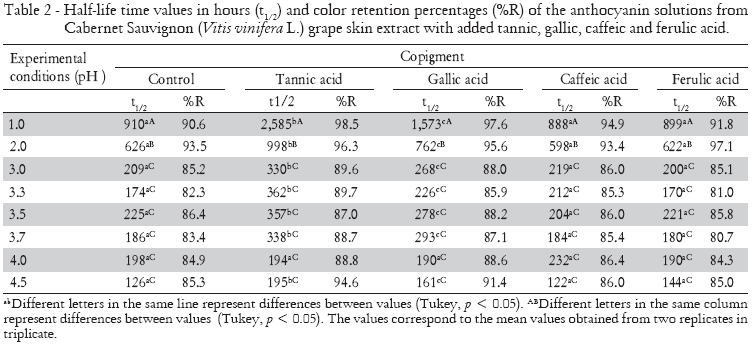Anthocyanins show low-stability when exposed to different food processing conditions. Copigmentation is one of the main reactions contributing to the in vivo color responsible to the stability of anthocyanins. In the aim of holding the red color, copigmentation effect of organic acids (caffeic, ferulic, gallic and tannic acids) combined with anthocyanins in crude Cabernet Sauvignon (Vitis vinifera L.) grape skin extract at pH values (1.0, 2.0, 3.0, 3.3, 3.5, 3.7, 4.0, 4.5) was evaluated in this research. The maximum copigmentation effect, revealed by the hyperchromic and bathochromic shifts in anthocyanin maximum absorbance wavelength, was obtained at pH 3.3 with every acid used. Anthocyanin stability was followed by measuring the loss of color, thus it was possible to determine the protecting effects of these copigments. Tannic acid was the best copigment in our model system, giving half-life time of 2,585 h. We are suggesting the formation of pyranoanthocyanins by the reactions of anthocyanins with caffeic and ferulic acid, these substances could be avoiding the observation of the copigmentation effect. Addition of organic acids could improve the anthocyanin stability; though, more studies are needed to justify the lack of copigmenting effect observed with the caffeic and ferulic acids.
stability; pigment; color retention; half-life time





